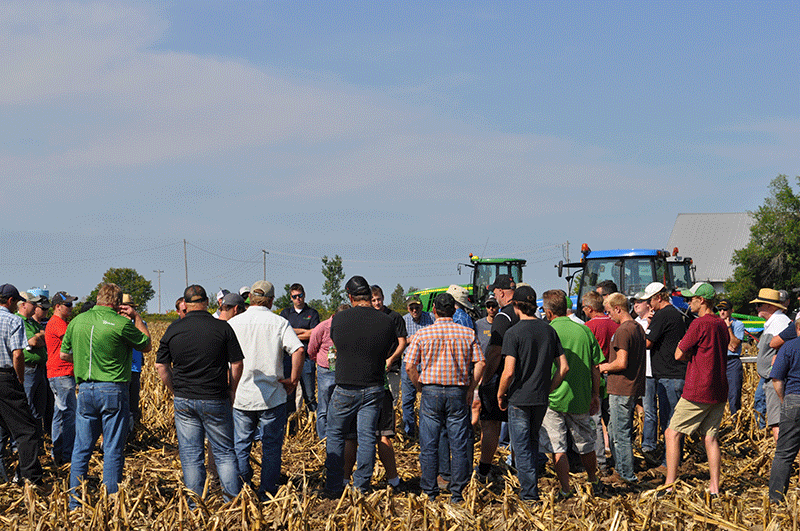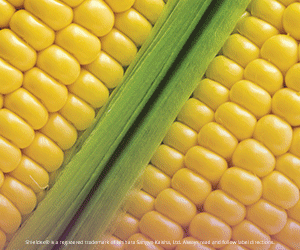Managing residue for best results
THE ART OF TILLAGE
STRONGER, TOUGHER HYBRIDS don’t only mean more productive, higher-yielding crops — they also mean an increase in residue left post-harvest that growers need to manage.
PHOTO: FARMERS PARTICIPATE IN A RESIDUE MANAGEMENT FIELD DAY IN ELMIRA.

“There’s at least two times as much stalk now compared to when no-till systems were first introduced,” says Pat Lynch, certified crop advisor. “Residue is now staying on top of the soil, and when it breaks down, takes away from the biological activity that is beneficial underground. Although residue is good for your bottom line and for your soil’s health, it needs to be correctly managed to maximize benefits.”
According to Lynch, tillage is an art, not a science, and should be tailored to individual fields, according to what will maximize financial benefit. The goal is to chop up residue and mix it in to the topsoil.
Residue should remain in the top layer to break the force of rain falling on the soil; without it, rain would work away soil fragments, washing away particles, and clogging holes and pores — following rains would then be forced to wash over top of the soil, further increasing erosion. Residue prevents this from happening.
Residue is a valuable part of the organic matter makeup of a soil, and should be incorporated into the top two to three inches of topsoil. However, Lynch says moldboard plowing often pushes residue too deep into the soil where it isn’t as beneficial, and no-till systems leave residue on top. He says one solution is conservation tillage.
THE RIGHT EQUIPMENT
At a Residue Management Day held by DuPont Pioneer in Elmira, a variety of tillage equipment was demonstrated in a field of corn stover. Each setup produced slightly different results, depending on depth, angle, and whether or not a deep ripper was included. According to Lynch, farmers know what seedbed conditions they are aiming for, so seeing the different setups help give insight as to how they can set up their equipment.
“If farmers like what they see, great — if not, something can be changed,” says Lynch. “Seed, soil type, rocks in the field, are all factors. It also depends on how the machine is handled — if you’re running the machine faster without as much horsepower, it can’t go as deep. Farmers also need to be mindful of how deep they’re going with the tillage — bringing up subsoil dilutes nutrients, and you can’t just create topsoil.”
After the machinery made a pass in the field, Pioneer employees would examine the residue and, using a “residue management stick”, would estimate the residue left on the soil, and discuss with the attendees what they liked and didn’t like. Blair Freeman, an account manager for DuPont Pioneer, led the discussion.
Ideally, there should be 30% – 40% residue cover left on the field at all times, including when the crop is growing in summer, fall, and into winter to prevent erosion in spring. If there isn’t a minimum of 30% residue covering soil, a cover crop should be planted. Cover crops keep soil on the farm, which increases value and yields.
According to Lynch, tillage should occur following corn, and after winter wheat with a cover crop. “Advances in conservation tillage are resulting in lower costs compared to moldboard plowing, where only one pass can be used instead of the moldboard plus an additional two to three secondary tillage methods,” says Lynch.
“Reduced tillage reduces costs for the grower in addition to agronomic benefits. Every time the machine goes on the field, compaction occurs. The compaction tillage relieves doesn’t equal the compaction it causes, often causing more damage than no tillage.”
Growers need to base their decisions based on what will improve their fields, which will in turn improve yields and return on investment. Correctly managing residue on fields with the right equipment with the right settings is a crucial component of soil health and quality — it’s an excellent investment in any grower’s operation. •








